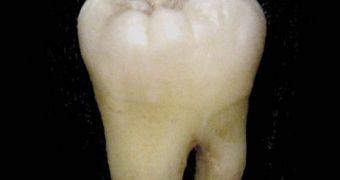People suffering from tooth sensitivity and decay as a result of receding gums may have reason to rejoice, say investigators from Switzerland and Germany. They say that using matrices made out of bovine collagen could contribute to reducing inflammation, and promote healing.
Exposed roots are the primary reason why tooth sensitivity ensues. People suffering from this condition find it hard to enjoy a wide variety of foods, especially if the stuff they want to eat or drink are not at room temperature.
Over time, this sensitivity leads to decay and tooth loss. What the team behind this study managed to create is a new method for enhancing gum healing. If this occurs, then sensitivity largely disappears, and decay is stalled for prolonged periods of time.
In experiments the team conducted using this approach, they managed to fully cover the exposed roots in about 50 percent of cases. Limited success did not translate into full coverage of the gums, but in a thickening of the margins around the tooth. This also counts as an improvement.
Details of the investigation and the methods used appear in the latest issue of the Head & Face Medicine, an open-access journal published by BioMed Central. The work was led by Dr. Shahram Ghanaati and dentist Dr. Markus Schlee.
They used collagen extracted from bovine pericardium to create the matrices. These support structures were then used to repair both gums and exposed roots. The collagen was obtained by culturing cells, breaking down their walls, dissolving fats and proteins, and then removing all the pathogens within.
This left researchers with the collagen skeleton that supports each cell. The team then surgically implanted the collagen support structures around affected teeth in 14 patients, and held up the matrices using suture wires.
About two weeks after the initial surgery, the wires were removed, and progress assessed. One of the most remarkable things the team noticed was that not a single one of their patients required antibiotics.
What this implies is that, regardless of its origins, properly synthesized collagen is biologically-neutral, EurekAlert reports.
“In all cases the healed-over implant improved the look and severity of the recession, and, in over half of all treatments, resulted in total coverage of the exposed root. We would not have expected any of these patients to get better without surgery,” Dr. Schlee says.

 14 DAY TRIAL //
14 DAY TRIAL //